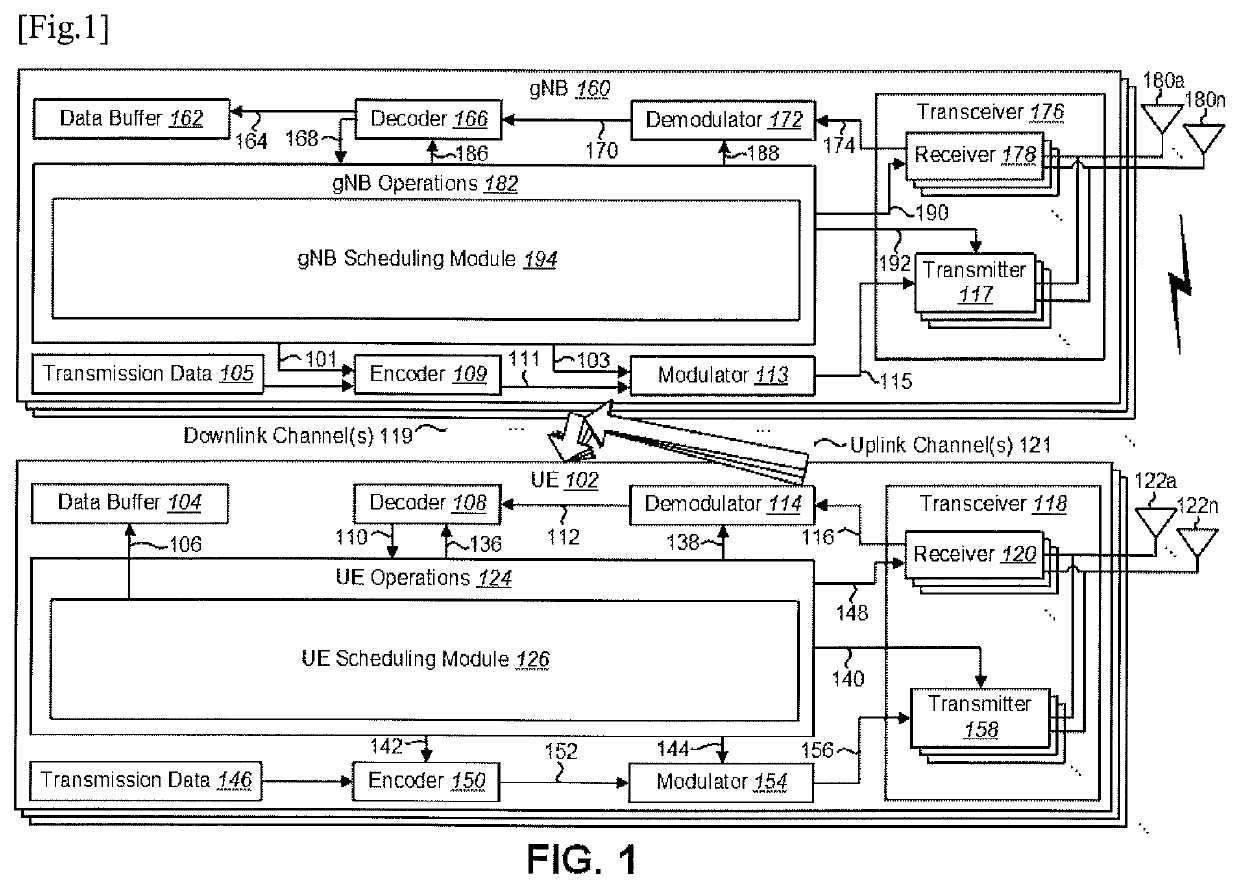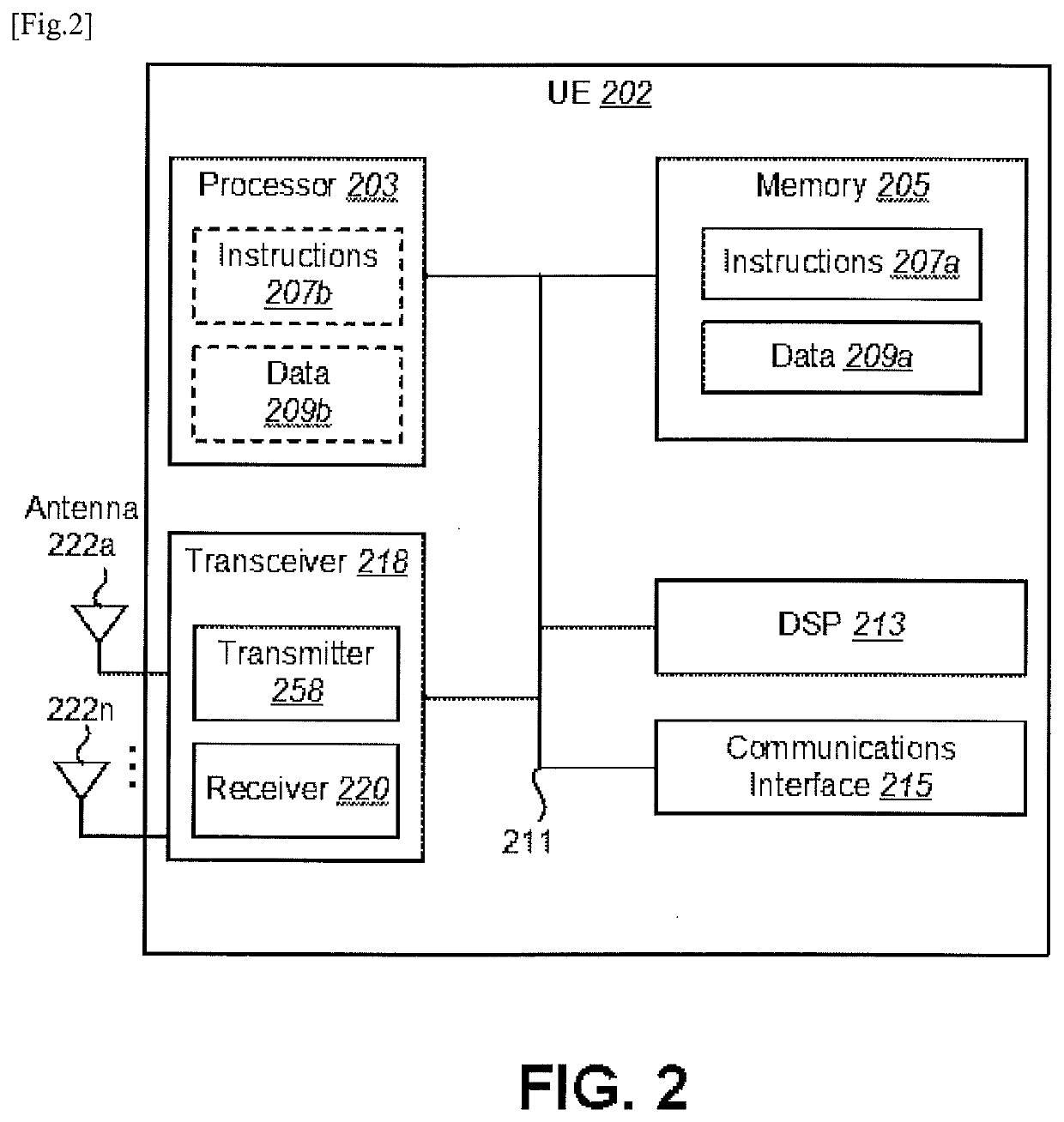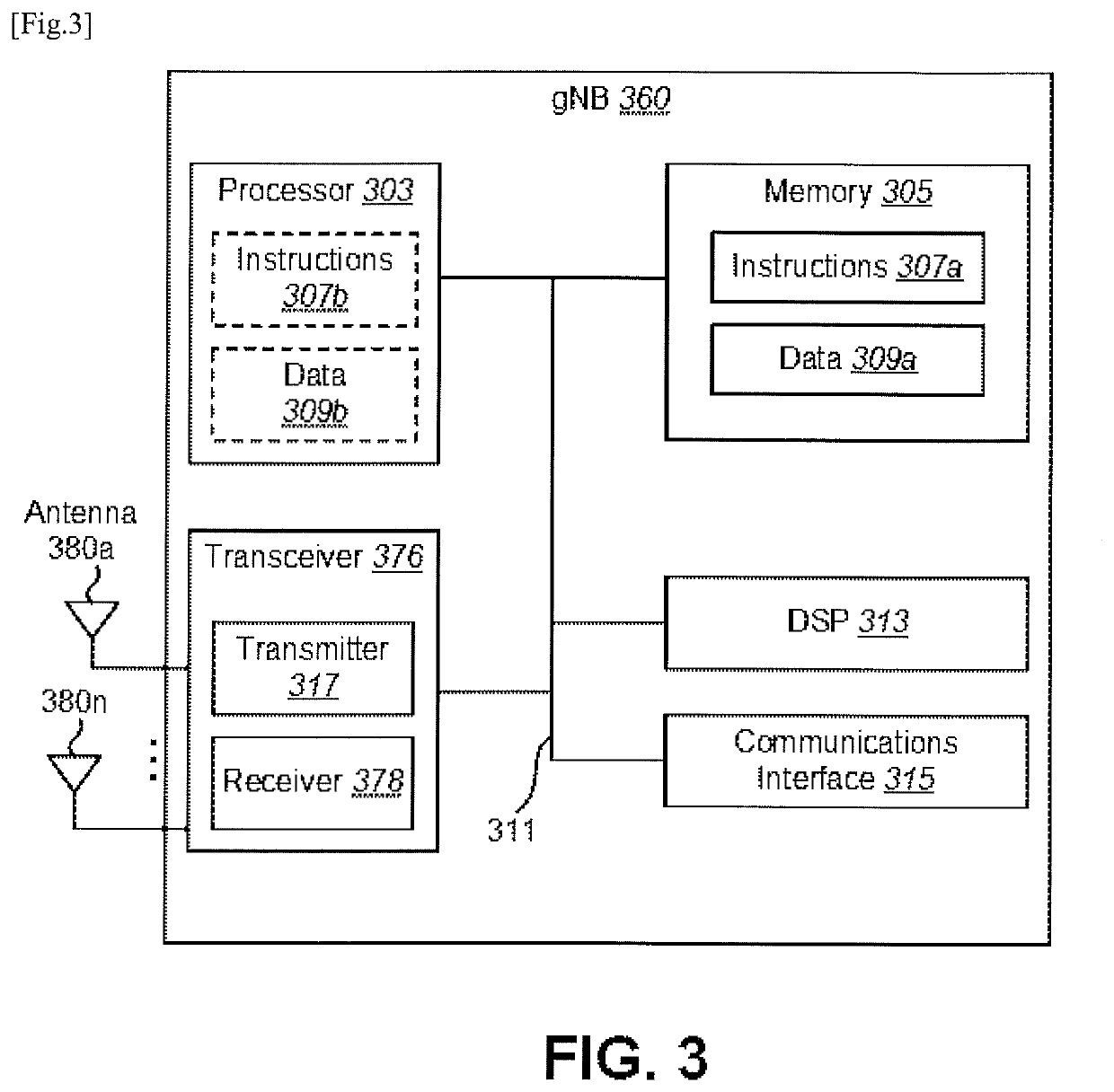User equipments, base stations, and methods
a technology of user equipment and base station, applied in the field of communication systems, can solve the problems of improving communication capacity, speed, flexibility and/or efficiency, and the communication structure used may only offer limited flexibility and/or efficiency
- Summary
- Abstract
- Description
- Claims
- Application Information
AI Technical Summary
Benefits of technology
Problems solved by technology
Method used
Image
Examples
case 2
[0226 PDCCH monitoring capability is a UE feature which supports PDCCH monitoring on any span of up to 3 consecutive OFDM symbols of a slot. For PDSCH mapping type A, the duration is between the first OFDM symbol of the slot and the last OFDM symbol of the scheduled PDSCH resources in the slot. For PDSCH mapping type B, the duration is the number of OFDM symbols of the scheduled PDSCH resources as signalled. For PDSCH mapping type B, the PDSCH duration is either 2, 4, or 7 OFDM symbols for normal cyclic prefix or either 2, 4, 6 OFDM symbols for extended cyclic prefix.
[0227]The difference of Case B from Case A is the number of PDCCH monitoring occasions within the initial partial slot. That of Case B is only one, in which several PDCCHs are transmitted. From the UE perspective, PDCCH monitoring processing requirement is not as much as Case A, because of less monitoring occasions within the initial partial slot. However, Case B may require a bit more processing ability to the gNB 160 ...
case c
[0228 is related to Option 2 and 3. In Case C, an initial partial slot is filled out with a single scheduling PDCCH and a single scheduled PDSCH. The gNB 160 starts PDSCH preparation prior to getting the channel, and right after the successful LBT the gNB generates PDCCH and transmits it followed by the PDSCH. The duration of the actual transmitted PDSCH is shorter than the assumed duration for the preparation. Therefore, puncturing or rate-matching needs to be applied to the PDSCH. Some information related to the modified duration (e.g. duration other than 2 / 4 / 7 symbols) could be carried in the scheduling PDCCH, since the PDCCH generation starts after the LBT. From the UE 102 point of view, processing requirement for Case C is almost the same as for Case B.
[0229]In Case C, even though the gNB 160 does not update PDCCH contents based on when the gNB gets the channel access successfully, actual time domain allocation of the PDSCH may be different from the assumption of the PDSCH prep...
case d
[0232 is related to Option 2. The difference of Case D from Case C is PDCCH contents. In Case D, the gNB 160 prepares the PDCCH prior to getting the channel. Therefore, the DCI cannot indicate the accurate time domain resource allocation. The duration could be tied to the time domain location of the PDCCH which is actually transmitted. From the UE point of view, processing requirement for Case D is almost the same as for Case B.
[0233]In Case D, even though the gNB 160 does not update PDCCH contents based on when the gNB gets the channel access successfully, actual time domain allocation of the PDSCH may be different from the assumption of the PDSCH preparation which affects the PDCCH contents. Therefore, UE 102 may interpret the PDCCH contents in a different way from the case when the UE 102 receives the PDCCH in a higher-layer configured PDCCH monitoring occasions.
[0234]For example, when the UE 102 receives the PDCCH in a higher-layer configured PDCCH monitoring occasions, the Time...
PUM
 Login to View More
Login to View More Abstract
Description
Claims
Application Information
 Login to View More
Login to View More - R&D
- Intellectual Property
- Life Sciences
- Materials
- Tech Scout
- Unparalleled Data Quality
- Higher Quality Content
- 60% Fewer Hallucinations
Browse by: Latest US Patents, China's latest patents, Technical Efficacy Thesaurus, Application Domain, Technology Topic, Popular Technical Reports.
© 2025 PatSnap. All rights reserved.Legal|Privacy policy|Modern Slavery Act Transparency Statement|Sitemap|About US| Contact US: help@patsnap.com



